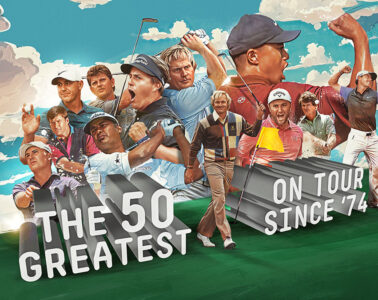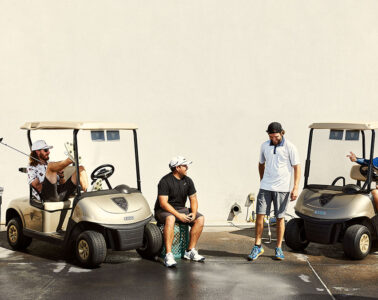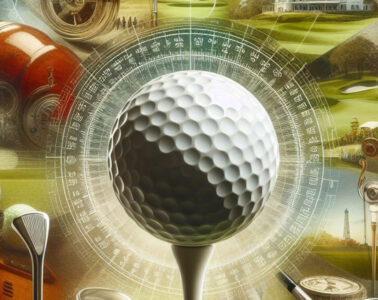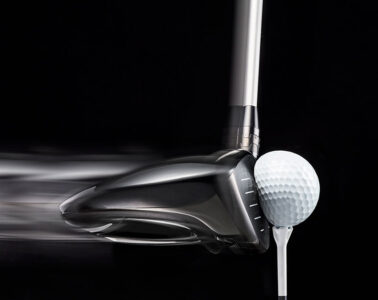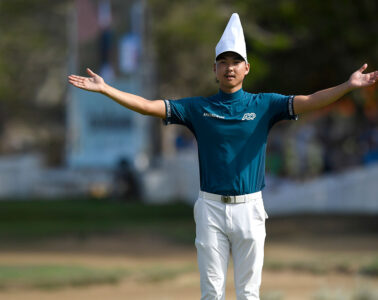With age comes wisdom – or at least an appreciation that maybe we actually didn’t know everything when we were in our 20s and 30s. But these four Aussie golf legends are not only astute in their thinking, they knew a thing or two about one thing in particular all those years ago – winning. And as fate would have it, they are all celebrating Major anniversaries in 2021. From career Grand Slams to claret jugs, COVID be damned if you think you’re going to put the celebrations on ice for these icons of Australian sport. And while they may be worlds apart amid a global health crisis, Australian Golf Digest sat down – virtually, at least – with Karrie Webb, Ian Baker-Finch, Jan Stephenson and David Graham to reminisce about the moments that created incredible legacies destined to outlast any pandemic.

20 YEARS
Karrie Webb
Career Grand Slam / 2001 US WOMEN’S Open / 2001 LPGA Championship
I was only talking to someone the other day about a tournament I’d won in 2001 and right then it hit me: s–t! That was 20 years ago!
Suffice to say, it’s even crazier to think it’s been two whole decades since I won the career Grand Slam. Seriously? It honestly doesn’t feel like it was that long ago.
Obviously my perspective now is completely different to what it was back then. People won’t believe it, but I look back at that season with mixed emotions. It was the best period of golf in my career, no question. I won the US Open by eight shots then completed the career Grand Slam at the LPGA Championship when I won that by a few, although that one’s a little more foggy to me because that was the week when my parents came over to watch me, and my grandfather – my mum’s father – suffered a massive stroke. We were told to come home because Grandad wasn’t going to make it out of the coma he was in. Saturday night of that tournament I had the lead, but we had to change Mum and Dad’s flights to have them home in Australia the very next day, and obviously not be there to watch me in the last round. I had actually contemplated pulling out that night, too. I remember Dad and I were sitting on the fire escape stairs of the hotel at 1am and he says, “Grandad wouldn’t want you to pull out. Why don’t you play tomorrow and then come home the next day?”
So that’s what I did, as difficult as it was. And that’s why I was so emotional when that final putt dropped at DuPont Country Club. It had nothing to do with me completing the career Grand Slam. It had everything to do with what we’d been through, as a family, in the few days prior. Everyone back home hadn’t really made Grandad’s stroke out to be that big a deal. At least my parents hadn’t relayed it to me that way. I mean, think back to 2001… yes, there were mobile phones, but you certainly didn’t use them to call internationally, that’s for sure. Someone just called my parents with the bad news. What my parents were relaying to me wasn’t that it was all bad – he was going to be OK. Then, of course, on Saturday night they were, like, “Everyone says you’ve got to come home.”
Fortunately for my mum, she made it home just in time before her father passed. Unfortunately, he passed away a couple of hours before my flight landed. I was heartbroken. Grandad had played a huge part in getting me into the game. My grandparents were the ones that patiently took me out for nine holes every Sunday when I was 4 years old, so I think that’s why it made winning that week so emotional – just how close a relationship I had with them.
Looking back at that period of golf, I was playing so well that I could just about have played on autopilot, I think. People have asked me what the secret was? I would only say that: the beginning of 1999 was when I switched to cross-handed putting, and that was when my best golf really started to take shape. When I was on, I was always a good putter, but for those next few years, I putted the dots off it, week in and week out.
Naturally, when you’re enjoying such a dominant period like that you draw comparisons to other players. It just so happened Tiger Woods was doing Tiger Woods things at the same time on the men’s tour. Obviously, we were contemporaries, but he was also completely changing the face of golf. Sure, it was nice to be compared to him for a bit, but I really felt his domination was that he really didn’t have any true rivalries or any peers that were matching him, win for win. I had Annika Sorenstam and then Se Ri Pak throughout those years and, of course, Juli Inkster. For a period of time there – 1999 through to 2002 – I think, between Juli and I, we won 10 of the 16 Majors. But there’s no doubt in my mind that the 2001 US Open at Pine Needles was the only Major that I ever went into where I knew I was going to play well. I just knew I was going to contend. I don’t think you could ever expect to win a tournament, but my preparation that week was just so good for a course I really loved playing. I was just ready, and I needed to get out there and play.
My golf was as good as it’s ever been through that period. It’s just a shame I didn’t celebrate it the way I probably should have. I flew back to Australia and then my grandfather passed and so we were planning a funeral. Golf really wasn’t talked about for a while.
I think, at the time, I appreciated what I was able to accomplish on the course but only now do I fully understand the significance of it. It’s funny because my expectations were so unrealistic back then. I remember at the end of 2001 I’d won two Majors and a Tour Championship. The two years prior to that, I’d won six times and seven times, so in 2001, I was like, Oh, what happened this year? If only I’d had someone to tell me I’d just won three of the biggest tournaments on tour.
If I could go back and give that younger Karrie anything, it would be a bit more perspective, and a few more people around her. I didn’t have a big team, but everyone should have been, like, “Yeah, it’s still an amazing year. Let’s chill out a little bit.”
The truth is I became too fixated on winning everything quickly, thinking I had to before it all came crashing down. I guess being compared to Tiger didn’t help with those pressures but that’s where one of the biggest differences was between us – I don’t think Tiger ever thought about the end. I always talked about how I was going to ride the wave of good golf for as long as I could. In essence, a wave always crashes. Tiger never spoke like that. He talked like it was just always going to be that way and there’s no reason why it shouldn’t be.
Maybe that was the ‘Aussie’ in me, thinking it’s not always going to be good… that it’s going to come crashing down at some point. I think when you put that notion out there, that it could end, it’s inevitably going to. But, boy, it was a fun wave to ride. – written with Brad Clifton
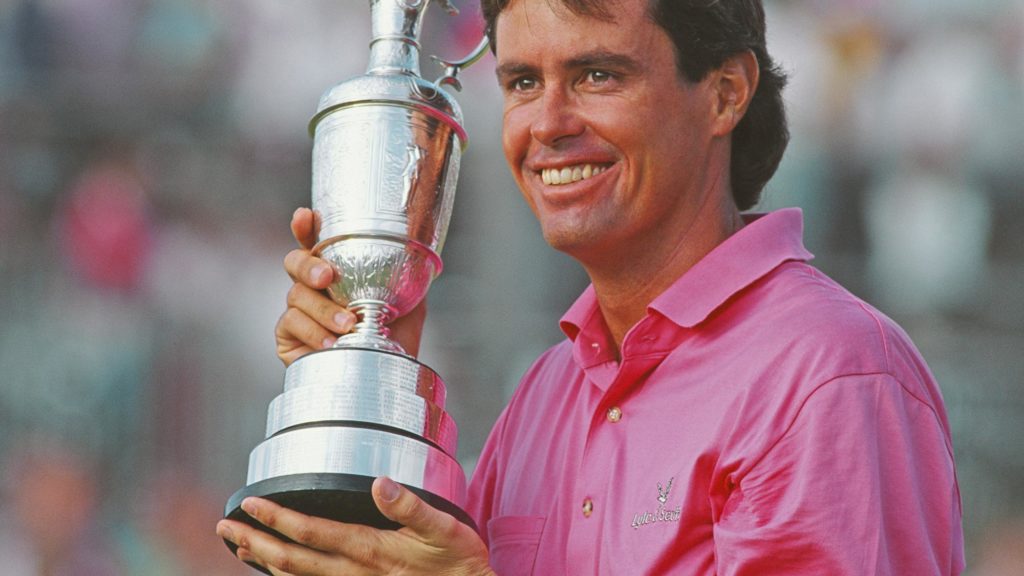
30 YEARS
Ian Baker-Finch
1991 Open champion – 8-under (272), Royal Birkdale Golf Club
I felt really comfortable that week, because I was in good form. I’d already said to myself at the start of the week and to my caddie, Pete Bender – and everyone says this in interviews all the time – “I’m just going to treat this like any other tournament.”
We’re all amped up, we’ve all worked our rear-ends off for the previous month to play at this Major, and then they come in and say, “No, I’m just going to calm down and settle down and play this like a regular tournament.” But I had said that to myself, and that I’m in good form, that I’m not going to get too amped up.
I was a lot more comfortable. I was like a veteran – I was confident, I wasn’t nervous about it and I knew what to expect. That made a big difference.
We had three days where we played practice rounds: Monday, Tuesday, Wednesday. Just typical Aussie fourball matches. We were all playing well – I think Pete Senior played well that week, “Pazza” played well, Mike Harwood was obviously second to me. Norman was up there as well somewhere. So the Aussies play well at Birkdale – we like that place and I was in a good place.
A whole bunch of caddies backed me because I was 50-to-1. I arrived Monday and I was 40-to-1 – a lot of caddies and the other players had already put money on me because I’d been playing so well.
It had been tough conditions and the winds weren’t great but even with 71-71, I was two-over and only four behind the lead. I went out on the Saturday and shot 64, six-under, which got me into the final group on Sunday, tied for the lead with Mark O’Meara at four-under par.
One of the key things about that final pairing was playing with Mark O’Meara, who’s a good friend of mine, a smooth swinger and fast walker, which really helped me. We walked at the same speed, we chatted all the way, and he had a great rhythm and a good demeanour.
I was really happy with the way I was hitting it. The ball was going where I was aiming. My focus was really, really good – I always had trouble focusing, but I’d been working on some breathing techniques that were helping me with that. I focused exceptionally well; I could pretty much see the line along the ground from the ball to the hole on every shot, whether it be a 200-yard 4-iron or a 110-yard wedge. I was hitting the ball where I aimed it and whatever I tried to do, I did. My caddie, Pete Bender, said it was like riding Secretariat: all he had to do was hang on and we’d win. Just get out of the way, hold the reins and stay on the back. My pre-shot routine was precise and perfect, which it needs to be for intense focus and confidence.
I birdied two, three, four, two-putted five – I hit the second shot in there safe to avoid missing to the wrong position. On six, we had a long wait on the tee, and I hit a great drive off six after about a half-hour delay then a 7-iron on the green to eight feet and sank the birdie putt. It feels like an eagle when you birdie the sixth at Birkdale. Then a 7-iron to 15 feet or so on the par-3 seventh, which I holed to go five-under. So at that point, I realised something special was happening, to be five-under through seven. I look up at the leaderboard as we went down to the eighth tee and see that I’m five in front, and there’s Seve on the board and I think “Hards” might have been on the board at that point and Couples. All of these luminaries were on the leaderboard and I was five in front. I thought to myself, S–t, you’d better not stuff it up from here or you won’t be allowed back home! What a funny thought to have. I’m standing on the eighth tee and thought, Oh my God! I’m five in front!
That was a special nine holes. To have the lead in a Major and shoot 29… it doesn’t get any better.
My caddie and I had a bit of a chat as we were walking back to that back tee on eight and he said, “Just keep doing what you’re doing. Just keep aiming pretty much to the flag if it is in the middle of the green but to the middle of the green if it isn’t.” And I two-putted every green from then on in. Made a bogey at 10, two-putted for birdie at 17, and played safely at 18 to avoid the bunkers, so I made bogey up there to win by two.
I remember the feeling on the last hole. I hit driver in the left rough purposely to miss that pot bunker that was out there around about 265. I didn’t want to hit it in that. And I didn’t want to put it in the bunkers around the green. My caddie didn’t let that happen, so I played right. I had about a 40-yard pitch and I got my wedge out and Pete said, “You know, you could just play it to the left of the bunker, if you like?” and I said, “If I can’t pitch it over that bunker from this position, I don’t deserve to win The Open.” I pitched it over the bunker, nearly holed it. Missed the par putt but it didn’t matter. Won by two.
From there it was all a bit of a blur. I gave Jenny and Hayley a hug. Jenny was six months pregnant with Laura, who was born in October that year. Wayne Grady came running down to the back of the green with a champagne – congratulations. We “cheers”-ed each other. Two unlikely Major champions coming from the same area within the year. That was pretty amazing.
This is an edited extract from the upcoming book, Aussies at The Open, by Steve Keipert and Tony Webeck, © 2022, CMMA Digital & Print, which traces the fortunes of every Australian golfer to ever play in The Open ahead of the 150th Open Championship at St Andrews next July. Register your interest for buying a copy by visiting australiangolfdigest.com.au/aussiesattheopen
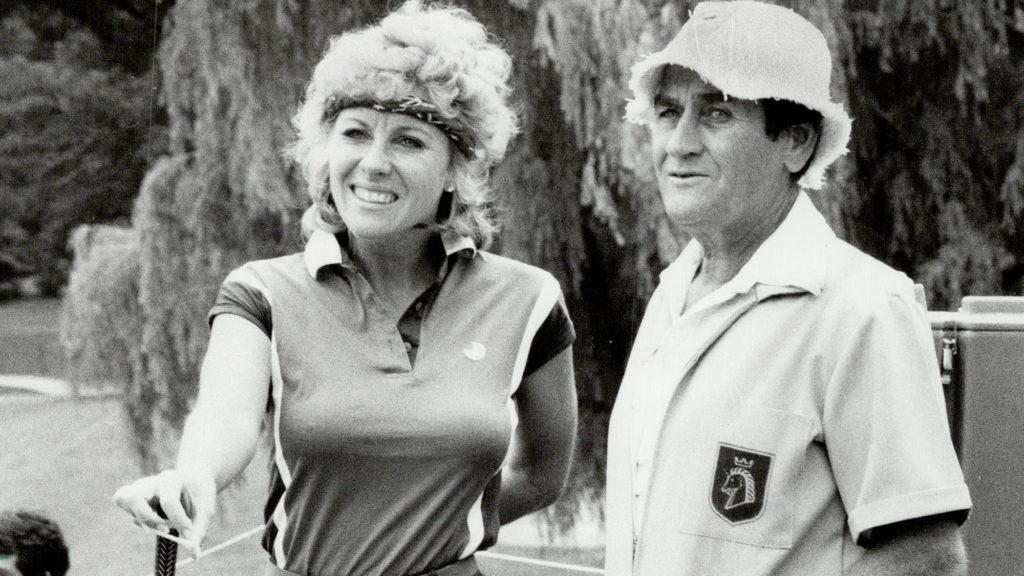
40 YEARS
Jan Stephenson
1981 Peter Jackson Classic (Canadian Open) champion 10-under (278), Summerlea Golf & Country Club
Oh Canada. It’s hard to believe it’s been 40 years since my Major breakthrough – a win that shocked a few around the world. It didn’t come as a surprise to me at the time because I was having a really good year in 1981. I’d won the Konica World Ladies Championship a few months earlier, so I felt like I was on the right track. Then, the week before we left for Canada, I was playing in Rochester and I thought I had it won before Nancy Lopez and Pat Bradley came home late, relegating me to third.
Seven days later in the Canadian Women’s Open, I was looking at the leaderboard on the final day and Nancy had just birdied 17 and Pat Bradley birdied 18. I knew I had to birdie the final hole to win otherwise I’d be going into a playoff. It was nerve-wracking stuff, not because I had led wire-to-wire – I think I ended up winning all my Majors wire-to-wire – but because I’d lost the week before and didn’t want to go up against Pat and Nancy in a playoff, especially given I had a terrible record in sudden death.
But here’s where it got interesting. I hit the ball pretty long back then, but Tom Kite and I had been working with renowned instructor Dave Pelz, who had come to us in 1980 and said, “I’ve done all these statistics and you two hit the most greens in the game but if you improved your short game, you’d win more tournaments.”
So Tom and I, along with a few other pros, would head to Baltimore on a Sunday night to work with Dave and he was the one that talked us into using three wedges – common practice today but back then relatively unheard of. In those days I was always of the thought, I can’t do without my 2-iron. Now nobody uses a 2-iron. Anyway, Dave had developed this system where we would lay up to certain distances and work on distance control with our wedges. My father, Frank [pictured] was caddieing for me and we started using laundry baskets as targets – we’d put them out at different distances on the range. If I was on tour, we would do it with towels. Dad and I would use walkie-talkies to communicate how close I was getting to each target on each shot. On a three-quarter sand wedge, Dad would say, “OK, that went one yard too far.” So I’d work on hitting my sand wedge 85 yards instead of 87. If the target was 80 yards, he might say, “You just hit it 85,” and I’d have to understand the feel of dialling it back five to six yards until I knew exactly how far each swing on each wedge went. I remember Dad saying, “OK, the next time you play a tournament, you need to think about this.” And that’s what we did that week in Canada. During a practice round on the last hole – a par 5 that you could reach in two but if you didn’t make it, the greenside bunkering was so severe that you really had trouble getting up and down – Dad said this was the perfect hole to execute the Dave Pelz drill. We agreed we would lay up instead of going for the green and leave ourselves one of those wedge shots that we’d been practising. Yet every day we’d get to that hole and I’d go, “No, I’m not going to do it. I’m not going to lay up because I know I can reach the green in two. And sure enough, I’d hit it in one of those bunkers and I wouldn’t get up and down. So on the final day of the tournament we get to 18 and I hit a really good drive. Dad turns to me and says, “Are you going to go for it or are you finally going to do what we practised all summer and spring?”
I wanted to go for it so badly because I’m on TV, I’m in the last group and I know I have to birdie otherwise I’m going into playoff with two superstars. I said to Dad, “Well, I don’t really want to lay up but I obviously haven’t had any success.”
I laid up. Everybody watching on is going, “What, she’s laying up?”
I hit a perfect third shot but we were the last group and it was late in the day, so it bounced a little bit past the hole, leaving me a 12-foot putt for the win. Dad says, “OK, you just have to make this to win.” It sounded really easy, you know, because it’s my first Major and if I don’t, I’m going into playoff with two superstars that I’m probably going to lose against. No pressure, right? Making matters worse was the fact the sun was setting and, because we were the final group and everyone wore steel spikes back in those days, I remember crouching down to look at my putt and all I could see were spike marks the size of small mountains. I was like, Oh my God, there’s no way I can make this putt.
Somehow, some way, the putt wobbled its way in. It was really exciting, not just because Dad was on my bag but because Dave Pelz was so proud of me for what I had just done. He said, “You did it, you did it.” I was like, “Yep. I didn’t want to do it that way, but we did it.”
We always loved going to Canada because my father couldn’t wait to get there and try their beer. “American beer’s too weak,” he’d say. What made that victory even more special was the fact I could speak French, so I did my speech in French and everybody was so impressed.
The reaction back home in Australia was amazing, too. While there wasn’t a lot of television coverage of our events, when news got out about my victory the media went into a frenzy. I remember Nancy and I used to have this competition on who could get the most media requests stuck on our lockers. I absolutely killed it that week. I’m like, “Look, I won this one, Nancy!” because my entire locker was covered with media requests from Australia.
There’s no doubt that victory took a lot of weight off my shoulders, especially given I was the face of the tour. I still have mixed feelings about whether I should have done it or not. The truth is, I think I would have won a lot more tournaments if I hadn’t taken on the role. But at the time when the commissioner sat me down and said, “Look, we need a new image and I want you to do this to help the tour, otherwise we’re going to be struggling,” I felt obliged to help out any way I could. He said, “I’m going to make you famous and you’ll make a lot of money,” and it was great in so many ways. I mean, I spent a lot of time travelling and meeting new sponsors and doing all this media stuff. Then, as it got later on in my career, I’d look back and go, I’m so tired. I didn’t get much time off because I was always doing that PR stuff on a Monday and Tuesday, going to media events and meeting with potential sponsors in New York. That’s how I met Donald Trump.
My nickname was “Franchise” but it was a lot of fun. I did get a lot of attention and big endorsements but it did take away from my game. I distinctly remember feeling really down about the fact that I was probably not going to get into the World Golf Hall of Fame, even though I’d done all this work. In the end, I got the nod for the Hall of Fame, so that was really all I ever wanted.
But would I agree to be the face of the game if I was a player today? No chance. As I found out that week in Canada, it’s more rewarding winning Majors. – written with Brad Clifton
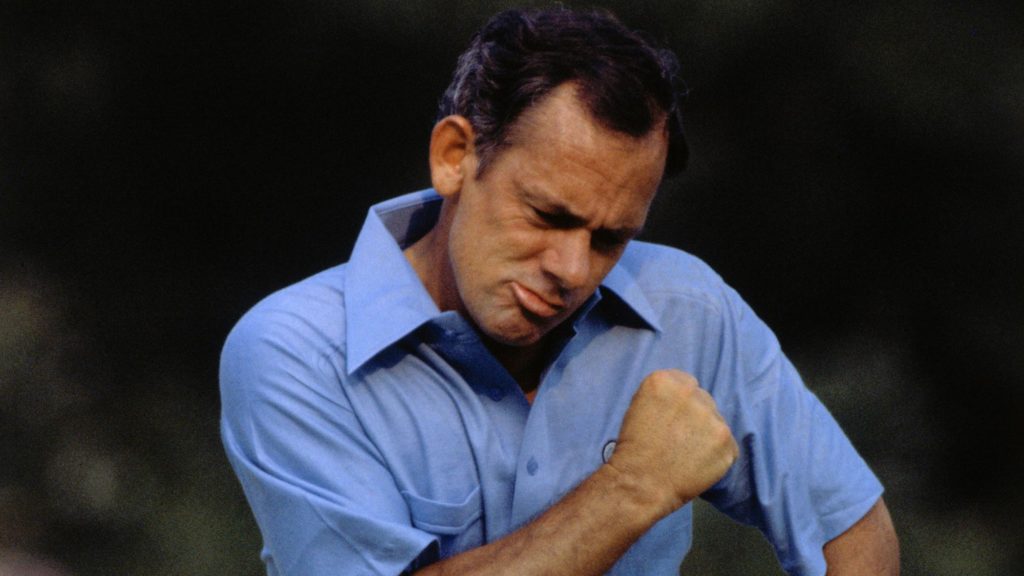
40 YEARS
David Graham
1981 US Open champion – 7-under (273), Merion Golf Club
Being the first Australian to win the US Open was quite cool to do. In fact, from where I came from, it was pretty remarkable, really. That a young teenager from Riversdale Golf Club in Melbourne, who switched from playing left-handed to right-handed, was able to go on and win a US Open on hallowed turf at Merion, coupled with the fact I was able to produce the greatest round of my career to do it, was very significant.
I’ve always rated that final round as my greatest day on a golf course, not just because I hit all the greens in regulation and missed only one fairway, but because I was able to accomplish it all on the final day in a Major. Had I played that way on a Thursday, it wouldn’t have got the recognition that it might’ve deserved. A lot of players can produce outstanding rounds of golf on Thursday and Friday or even Saturday, but to do it on a Sunday in a tournament of that magnitude, at Merion, just brought so much more attention to the round. It’s something that I’m truly honoured and thrilled to have done.
I’m often asked whether I sensed something special was brewing that Sunday, but I’m not so sure. Maybe Jack Nicklaus was capable of thinking, This tournament’s mine to win and I’m going to win it, but I don’t think I was good enough to be able to think that way. If I’m being totally honest, I think the realisation that the 1981 US Open could be mine for the taking didn’t really sink in until I walked onto the 18th tee. You can never be too presumptuous in this game. You can never think after one hole on Sunday that the tournament is yours to win. It’s yours to lose, sure. But it’s also everybody’s to win.
One of the keys to my victory that year was my ability to control my emotions throughout the final round. I think every top player learns to play within themselves and to not get overly excited prematurely. If you can’t do that, it can lead to disappointment. The calmer you are and the more level-headed you play, the better off you will be. There’s no doubt the up-and-down emotions of a big tournament can affect you. You get too high and then if something bad happens, you get too low. I think if you look at the great players of the world, they seem to play at a far more level keel than what a lot of others do. They might get excited about a fist pump, like Tiger Woods has so often done, but then you can see them settle down again because they know they’re not done.
I felt like my game was in a good place heading into that week. I was fortunate that I played a practice round with Gary Player and when we finished playing he was very nice and mentioned that he’d never seen me play that well before, which was a very high compliment for me, coming from him. You get indications that you’re playing well, that you’re driving the ball well or you like the speed of the greens or you like the way the golf course feels and everything, but you don’t allow yourself to think that you’re going to win.
Boy it was a tough golf course that week. I think people forget how tough the Major-championship set-ups were back in those days. Everyone talks about how brutally the USGA sets up courses for US Opens today in a bid to halt the bombers. Well, I think in some cases, the rough was more penal then than it is now. I think the USGA has actually relaxed their heights of rough and the width of the fairways. When we played Merion, the rough was far higher than it is now. The governing bodies don’t allow the golf course to get completely out of control like they used to, which is a good thing. There was a reason I was the first player to card a winning score under par around that place.
I still have my replica US Open trophy locked away in my trophy case. I don’t get it out that often, but I know where it is. I don’t like to display those types of things that much. I’ve done a good job of putting certain things from that week in places where they’ll stay for perpetuity. The irons that I used to win sit over the mantelpiece in a lovely case at Merion. My Bullseye putter is also displayed in the archives at Merion. My driver from that week is in the Australian Sports Hall of Fame. I managed to put a lot of those things in safe places where they’ll stay and hopefully stand the test of time.
Of all the gifts and gestures I received for my win at Merion, the most significant would have to be the congratulatory letter that Jack Nicklaus wrote to me and put in my locker. I also think Gary Player being my major sponsor into the World Golf Hall of Fame remains very significant. If you look back at golf in Australia when I played, we were so fortunate that Arnold Palmer, Jack, Gary and Lee Trevino came to Australia as often as they did. It was a monumental task to even get to Australia in those days, let alone hang around and play golf. But they always did because they wanted to expose more people to the game. I can remember Jack Nicklaus playing in the Australian Open at Royal Hobart – what a trek it was for him to get all the way down there to play in that tournament. Australian golf in the era that I played was blessed that these great names of the game came and showed people like myself what a world-class golfer was.
I still miss Australia. I would love to spend time and weeks going to Riversdale where I learnt my craft. I spent so many wonderful days and weeks at Royal Sydney. I used to go out there with Alex Mercer. I miss him taking me out on the boat, trying to teach me how to fish, which I was hopeless at doing. I think the best thing I ever caught when I fished with Alex was an old leather boot.
I still can’t believe it was 40 years ago since I won the US Open. Well, not in my brain, anyway. My body definitely knows it’s been that long. I can still remember celebrating by buying the entire press tent champagne. I think I’ve only got about three payments left on that, actually.
There’s a great old saying: it’s better to be a ‘has-been’ than a ‘never was’. I’m happy to be a has-been. – written with Brad Clifton


